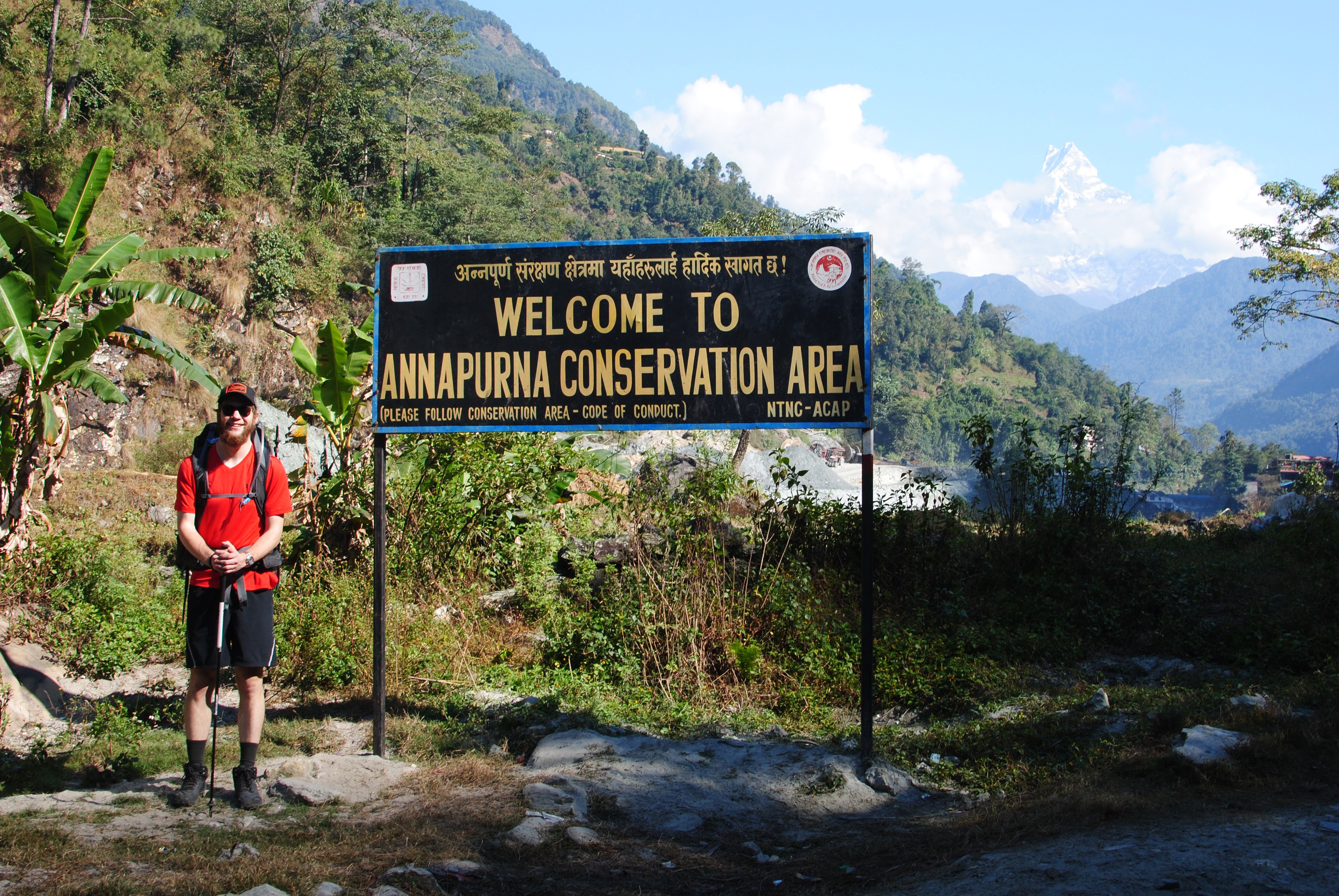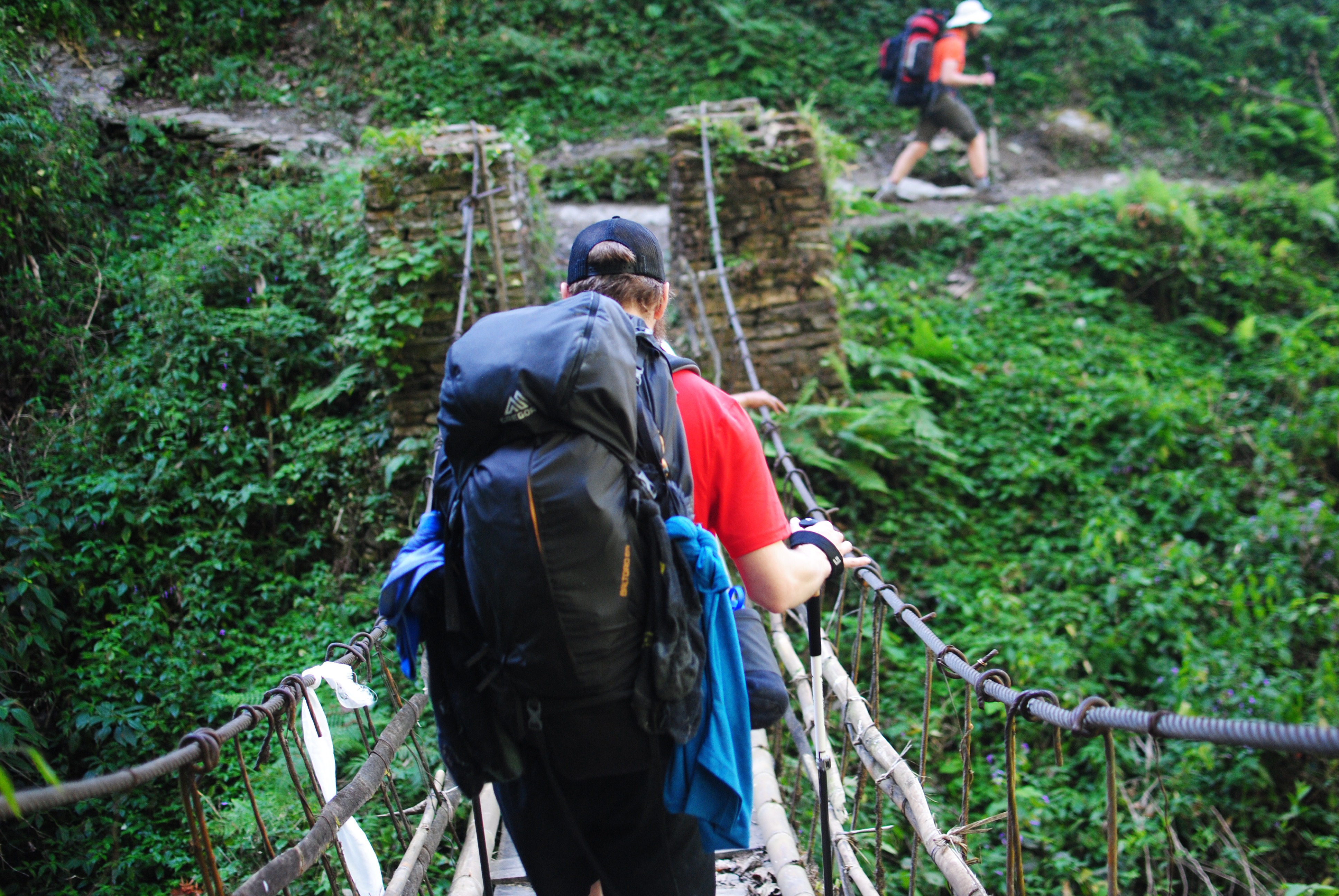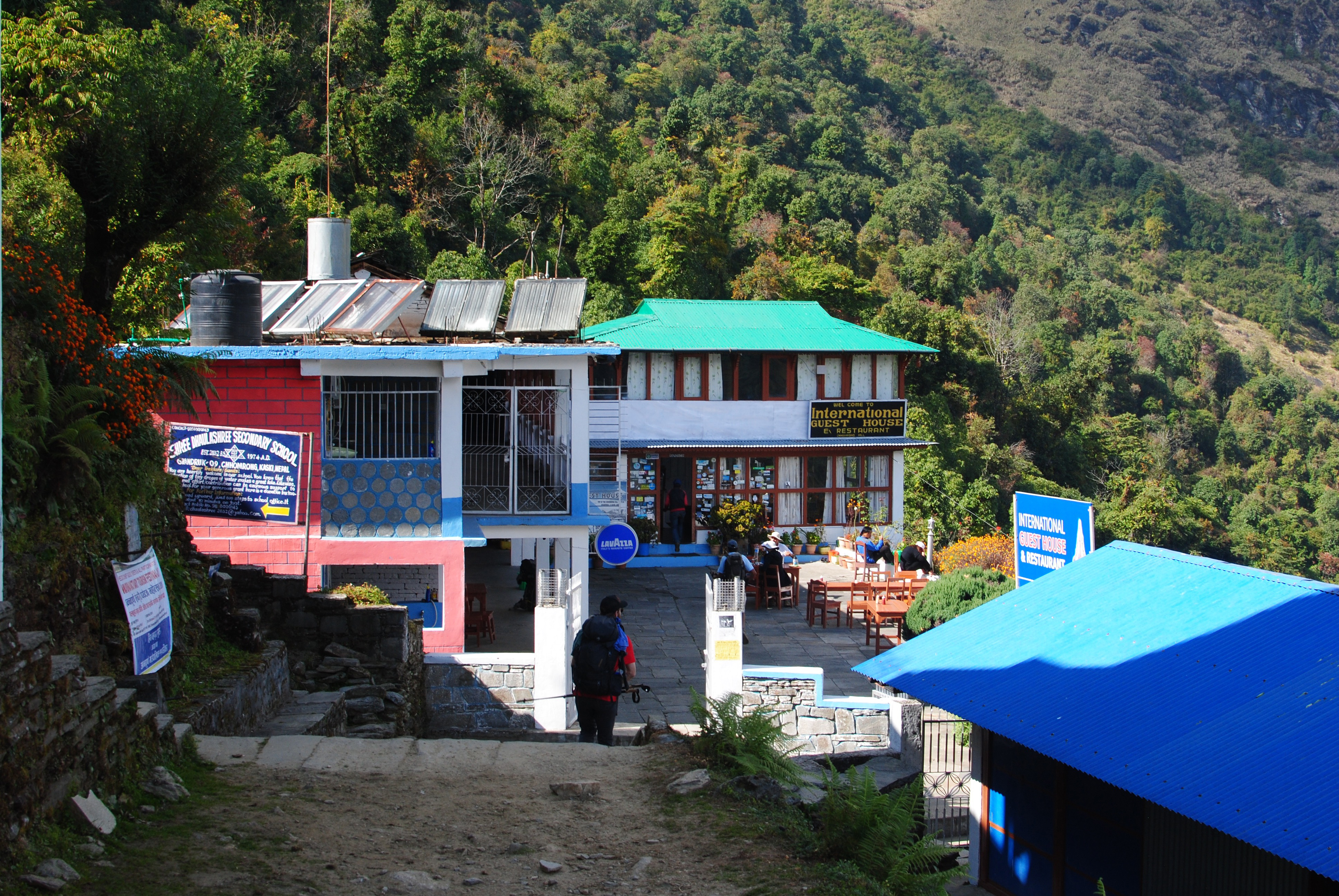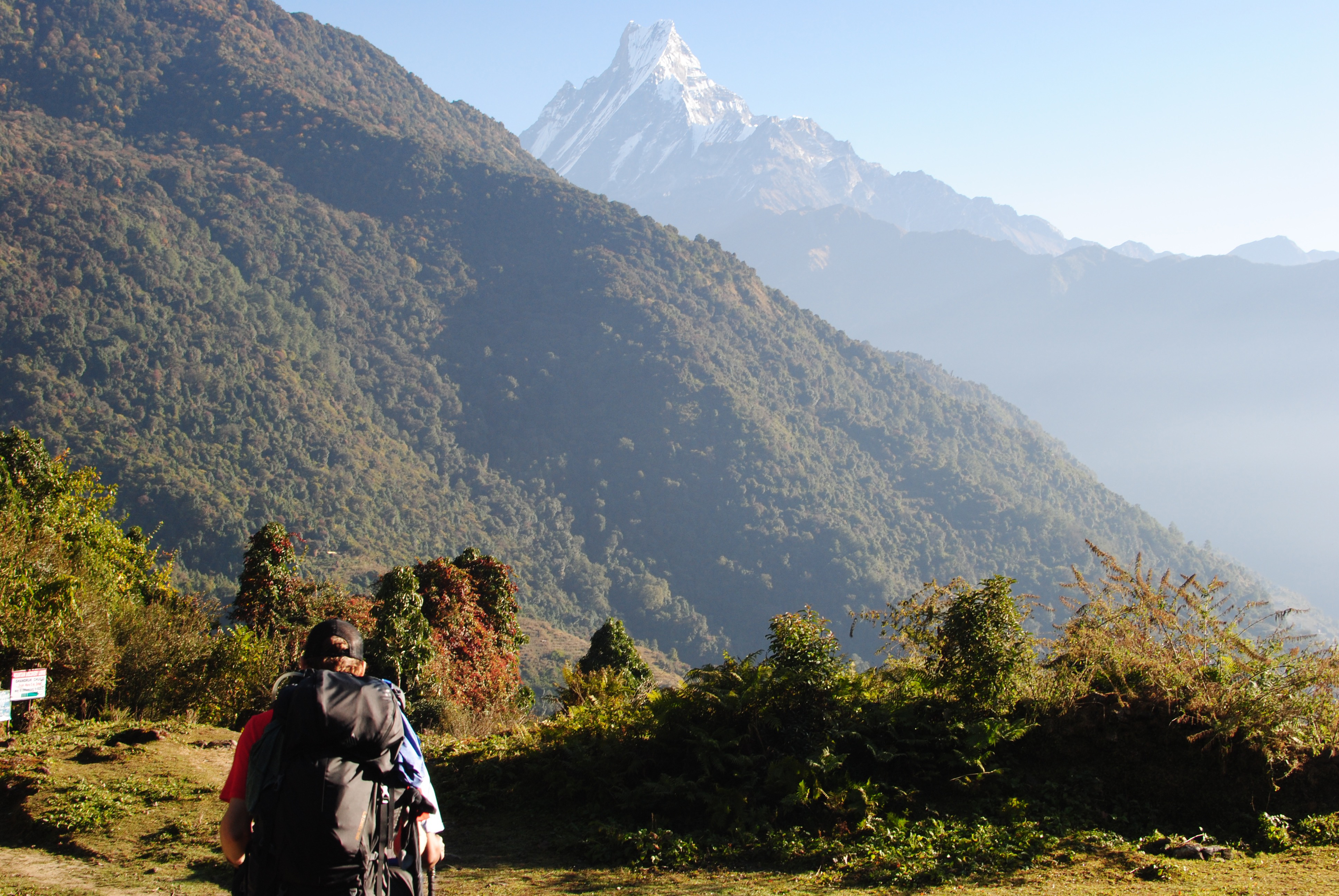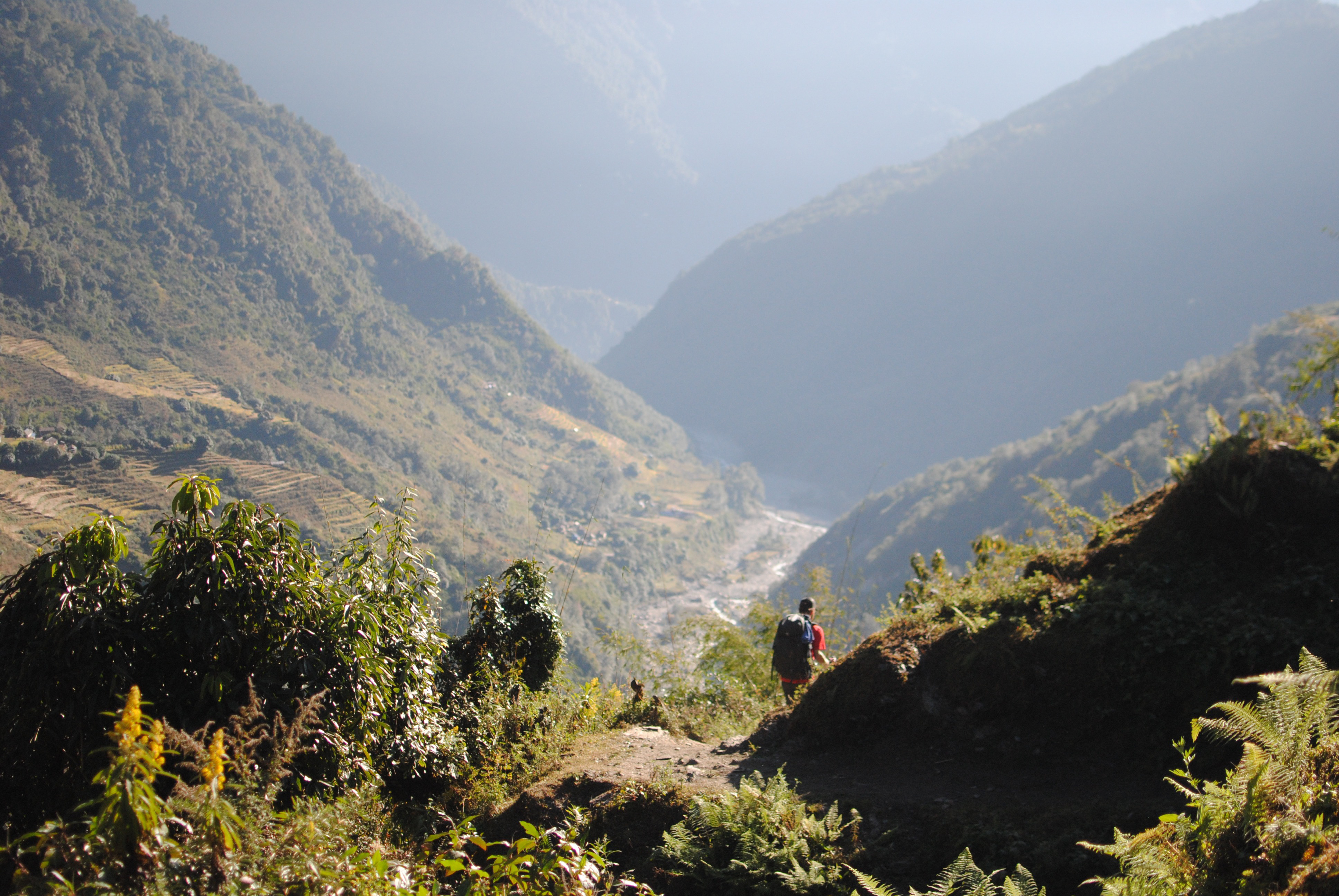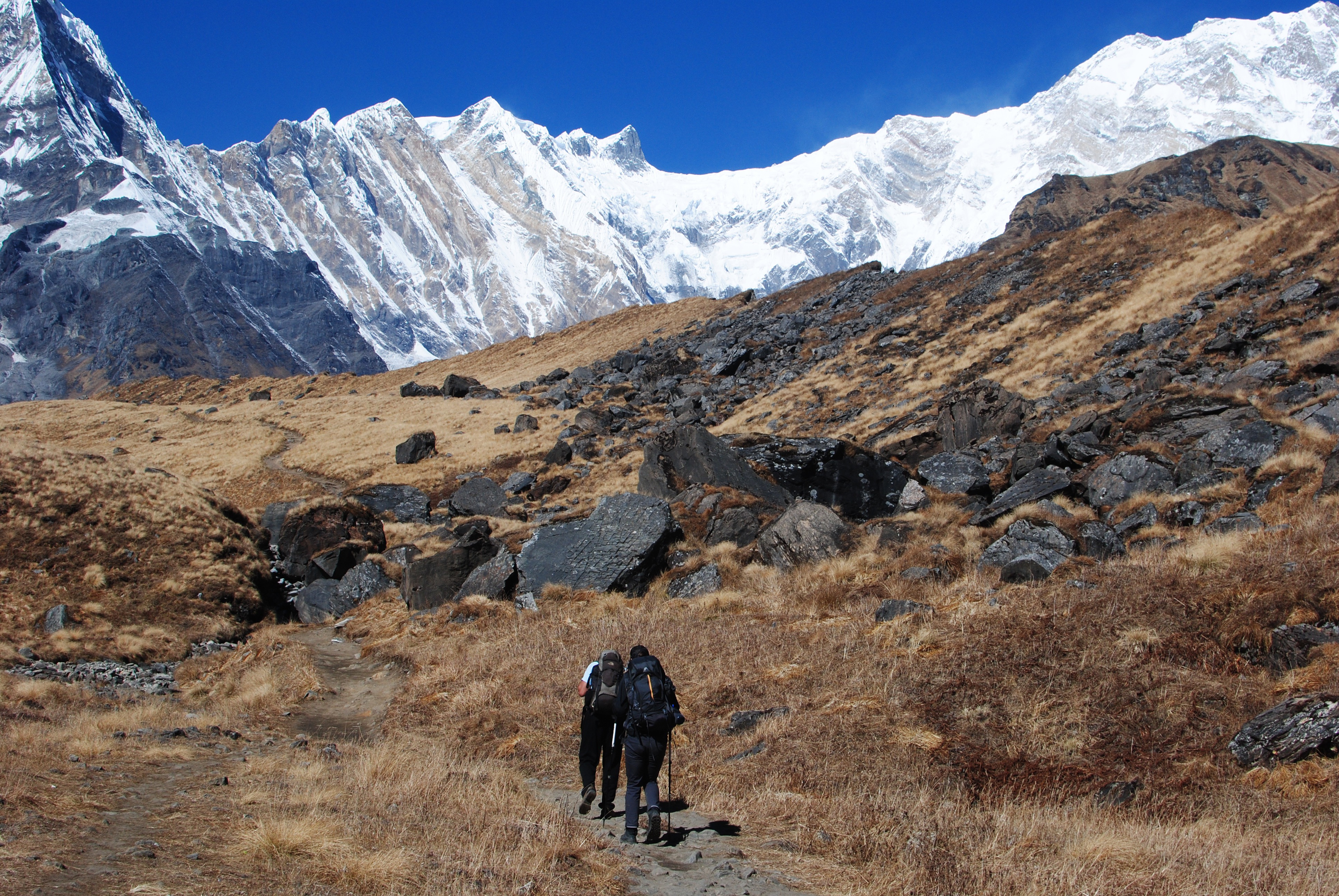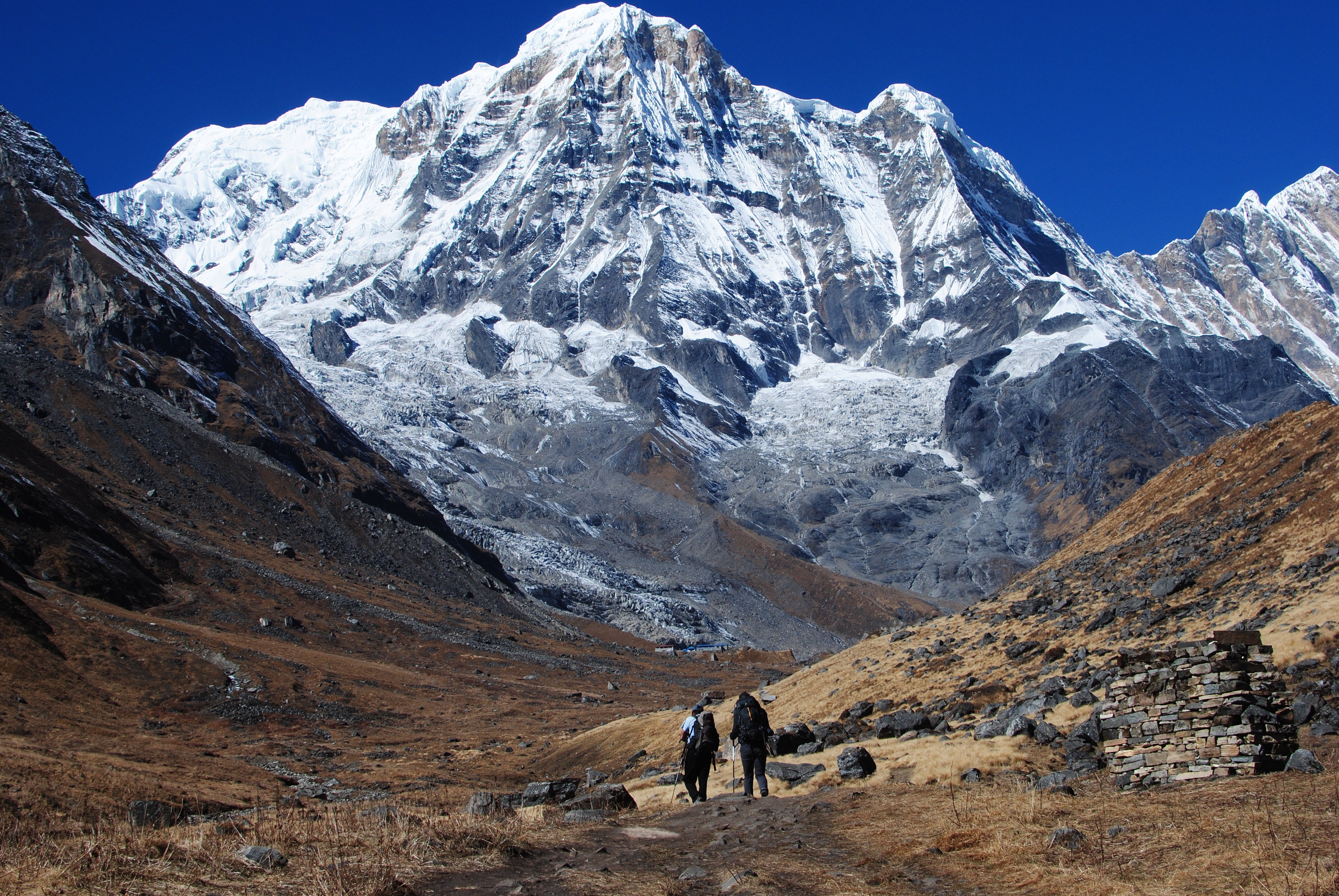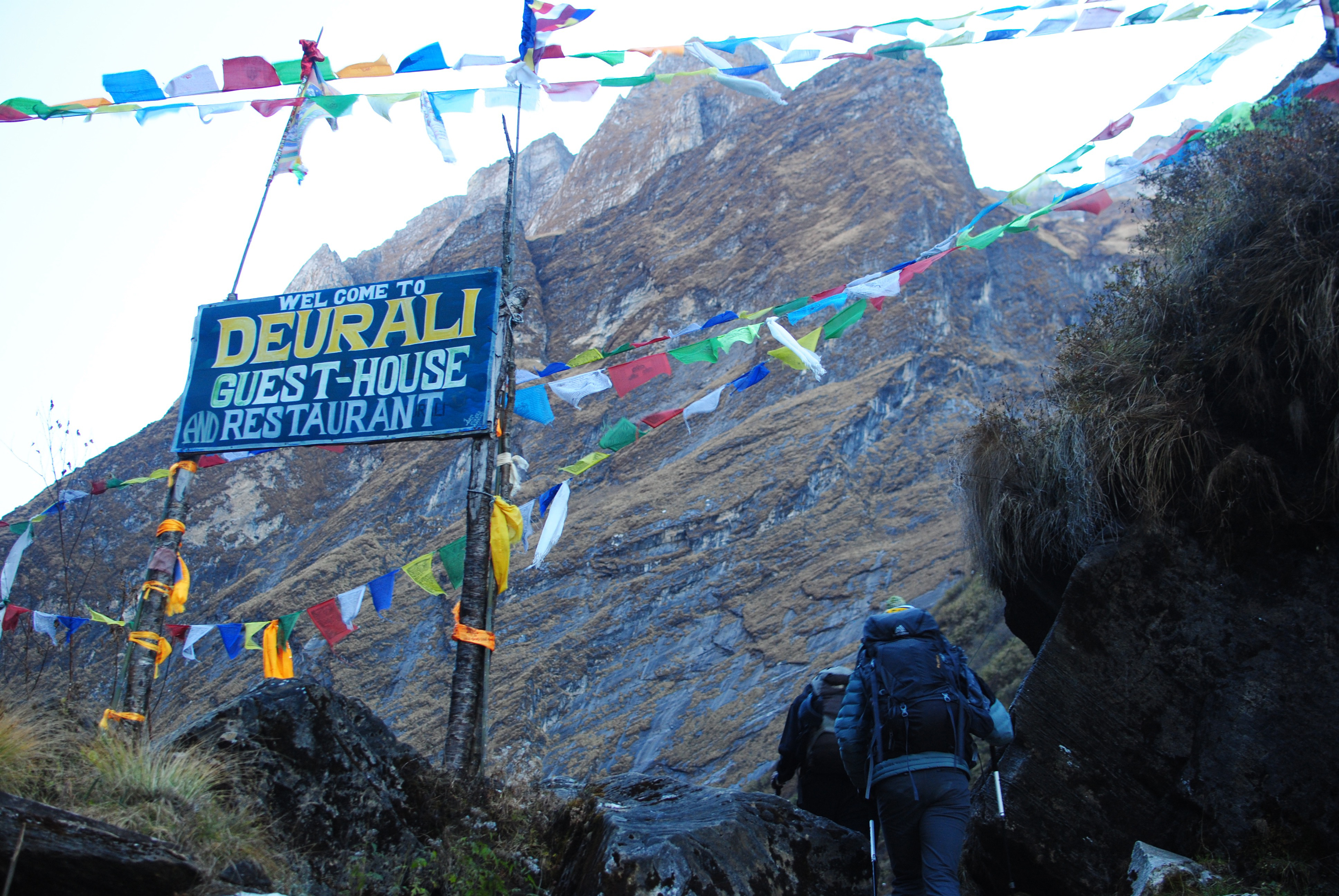Digital Trends staffer Parker Hall recently spent two weeks trekking through Nepal’s Annapurna region. Below you’ll find a full gear guide based on his experiences.
There is one singular truth that should pervade the thoughts of every would-be Himalayan trekker months before they step onto a plane: Nepali flat is not the same as American flat. You’ll need to bear it heavily in mind when planning a trek between teahouses in the Himalayan nation’s gorgeous high country, where locals quickly ascend lengthy stretches of slate steps in flip flops while tourists look on with wide-eyed incredulity.
For those of us too stubborn or cheap to hire a porter to carry our weight for a couple weeks of scenic walking vacation, that means going light.
Thank God, then, for technology; Modern backpacking gear no longer requires the same comfort-or-weight choices it did in previous decades. New, lightweight tech makes it possible to stay cozy during the massive change in weather conditions you’ll encounter when travelling from 2,500 feet all the way to 13,500, and to not require back surgery when you make it home again.
After spending 11 days trekking to and from Annapurna Base Camp, I realized yet another incredibly evident fact: Nepali trekking isn’t reserved for only the gruffest outdoorspeople on the planet. Great books, knowledgeable, English-speaking guides, and a plethora of no-tent accommodations along most major routes means you can travel to one of the most beautiful places on Earth with nothing more than comfortable walking shoes, a decent pack, and a small assortment of well-made layers.
Trekking Gear
- Backpack: Gregory Baltoro 65
- Sleeping Bag: North Face Hyper Kazoo
- Pillow: Trekkology
- Headlamp: Black Diamond Spot
- Trekking Poles: Black Diamond Alpine Carbon Cork
- Hydration Bladder: Hydrapak Shapeshift 3L
- Cleats: Yaktrax
- Sunglasses
- Stuffsacks: Storage bags
Take it from someone who knows: My mountain-climbing girlfriend dragged this beer-loving tech writer around the Annapurna region for nearly two weeks and I didn’t pass out, vomit, or physically break even once — despite a myriad of bets being passed around in an office pool. Heck, thanks to an excellent shoe choice (more on this later), I didn’t even get a single blister.
For our 11 days on trail, our trio (two tourists and a hired Nepali guide) carried our own loads in backpacks that weighed a comfortable 27 pounds (12ish Kilos) each, 3 liters of water included. Because we’d be ascending from tropical forest to high alpine environments, we needed clothing and sleeping bags that would work in virtually all weather conditions but we didn’t need to bring food, as we’d be sleeping and eating in Teahouses at small villages along the way.
Before leaving on our journey, I enlisted the help of Digital Trends’ gear-saavy outdoor editor Rick Stella to help assemble what we thought would be the best and lightest stuff for the job, aiming to put some of the premier outdoor gear on the planet through its paces. Below you’ll find a full account of how everything worked, what I loved, what I hated, and what I’ll do differently next time.
Footwear for the win
First things first: If you’re planning to be walking for six hours a day, you’re going to want excellent footwear. A great set of traditional hiking boots will work just fine but they are also typically very heavy. When you have to climb up and down slate stairs and dirt paths all day, every day, you want the lightest shoes possible. Thankfully, with trail running becoming increasingly popular around the world, many companies are offering very lightweight shoes with terrific grippy outsoles and plush comfort. Trail runners seemed to be a better bet for a long journey we didn’t anticipate would see much snow in the Fall, and they also have the added benefit of not needing as much traditional break-in time as normal hiking boots.

Altra’s Neoshell Lone Peak Mid perfectly fit the bill. A trail running chassis which offered lots of padding on the outsole, the shoe features an open toebox design, in addition to being fully waterproofed via Polartec fabric, and offers a bit more ankle support than its low-top counterparts.
Clothing
- Underwear: REI Boxer Briefs (3 pairs)
- Socks: REI Coolmax (3 pairs), Merino Wool Heavyweight (one pair)
- Long underwear/base layer: Under Armour Base 3.0
- Long sleeve base layer: Under Armour Base 1.0
- Short sleeve base layer: Under Armour Heat Gear (two)
- Trekking Pants: Mountain Hardware AP
- Shorts: Champion Performax Marathon
- Fleece: Columbia Northern Ground Half Zip
- Insulated Jacket: Mountain Hardware StretchDown
- Rain Jacket: Altra Wasatch
- Rain Pant: Marmot Precip
- Inner Gloves: Mountain Made Outdoor Gloves
- Outer Gloves: Scott Ski Mittens
- Boots: Altra Lone Peak Neoshell Mid
- Trekking Towel (Med): Rainleaf Microfiber
Having now walked hundreds of miles in these shoes in a variety of weather conditions, I can say with confidence they were the single best piece of gear I had. Not only did they perform perfectly in all conditions, they show virtually no signs of wear after hundreds of miles of walking. The open toebox and thick padding meant that nothing rubbed around in the front of my feet (where many blisters occur), and that both feet were never sore after a long day carrying a pack over rough terrain. My hiking partner was wearing a low top version of the same shoe without waterproofing and she had the same outstanding experience.
Socks were also key to a comfortable shoe experience and three pairs of lightweight trekking socks from REI (plus one thicker pair for nights and really cold days) worked great. You can spend more on even nicer, brand-name socks but I’m not sure they’ll actually work much better than the inexpensive REI options.
The rest of the kit
Another key piece of walking gear which proved invaluable was a pair of extremely lightweight trekking poles from Black Diamond. The carbon fiber poles weren’t noticeable on the exterior of my pack when folded up, and provided excellent stability when ascending and descending long stretches — which is basically walking almost anywhere in the Annapurna region. Speaking of, the Gregory Baltoro 65 pack was a bit large for such a lightweight journey but was selected because it fit exceptionally well on my 6’2” frame. In terms of backpacks, I believe in going for comfort over weight. If you’re going to carry anything for many days at a time, you want to make sure it feels good on you.
In general, the rest of the gear was selected for its light weight, durability, and ability to be quickly put on or removed for warmth or when it got too hot.

The first few days of trekking were in the mid-70s, a temperature at which the excellent moisture-wicking qualities of both Under Armour Heat Gear t-shirts were on full display, helping to cool off areas with straps and where the pack covered my back. The same was true of the company’s warm base layers, which provided excellent warmth at an extremely light weight when worn at higher alpine elevations.
Perhaps the best aspect of Under Armour’s gear is that it’s all hyper comfortable. Where other outdoor base layers tend to be scratchy and annoying, everything from the kings of base layer tech was plush and comfy, making it easy to wear for days at a time.
Electronics/Misc
- Water filter: SteriPen Classic
- Camera: Nikon D3000 w/ 35mm fixed lens, Ricoh Theta S
- Portable charger: Anker Astro E1
- Phone: Moto X Pure
- Headphones: V-Moda Forza
- Pulse oximeter
For top layers, a simple pair of running shorts from Champion were perfect for warm weather and were very light when packed away. Most days were spent wearing a spectacularly comfortable pair of pants from Mountain Hardwear (the AP Pant, specifically). These were favorites of Outdoor Editor Rick Stella during his last adventurous summer in and around Oregon, and I absolutely see why. They fit nicely and are durable, dry quickly when wet, and even have some nice snaps to roll them up above the boot line. As an added benefit, they feature a few reflective strips on the back when rolled up, making it easy for others to spot you in the dark from behind.
In terms of warmer outer layers, one of my other favorites from the trip was a very comfortable Columbia fleece. Where the thick and light Mountain Hardwear puffy I brought was often used upon arriving at higher alpine environments when my pack was off, the fleece was easily warm enough to wear under my pack during cold trekking days, providing just the right amount of breathability to keep me from sweating through the Under Armour beneath it.
At night, there was nothing more comfortable than the extremely light North Face Hyper Kazoo bag which packed down small into the company’s included stuff sack during the day, and provided plenty of warmth for the at-times frigid nights at altitude.
Odd gear out
Like any trip — be it a vacation or trek through Nepal — I ended up bringing along more than I truly needed. A couple items which didn’t end up getting used were a thin pair of rain pants, a rain jacket, and a pair of Yaktrax for better traction in ice or snow. While I felt more comfortable having taken this gear initially, our guide didn’t take anything like it and we probably would have simply walked to the nearest teahouse (they are typically about one-two hours apart in the Annapurna region) to wait out a bad storm if we came across one.
The Yaktrax especially seemed unnecessary: If there’s so much snow on a pass or on a path that you can’t walk safely without them, you probably should have crampons. Thankfully, none of this gear was too heavy to carry but those who are hyper vigilant about weight can bail on them and save a pound or two — unless, of course, they plan on trekking during the rainy season.
The trek wasn’t without its hiccups
Given the great advice from members of our Outdoors section, there was only one piece of gear that truly gave our crew any real trouble on the journey: The batteries we used to power our SteriPen Classic. The UV water purifier worked great when it had fresh batteries but because we didn’t bring the recommended lithium AAs — and instead relied on normal AAs — we were only able to filter roughly ten liters of water on each set of four. That meant purchasing (and carrying) a lot of AAs on the trail. That said, the purifier did save us the purchase of many plastic bottles and, frankly, that’s worth it — all plastic gets burned, not recycled, in the remote mountain towns of Nepal. Next time, we’ll bring the proper batteries.
A new era of outdoor gear
The fact a small battery snafu marked the biggest issue on our lightweight trekking excursion speaks to the quality of modern outdoor gear, which has been steadily making even the most daunting excursions much, much easier. While trekking to Annapurna Base Camp did require a healthy dose of physical endurance — walking for many hours a day isn’t some people’s idea of a relaxing vacation — the tools we brought made it extremely doable even for this moderately fit tech writer.
That, the scenery, and the culture make a trek to Nepal absolutely worth considering, and we hope that this lightweight gear guide helps you feel more comfortable on your own journey into the tallest mountain range on Earth. If you bring the right stuff, you’ll spend the vast majority of your time enjoying the trek, rather than worrying about your feet, your back, or other travel minutia.





